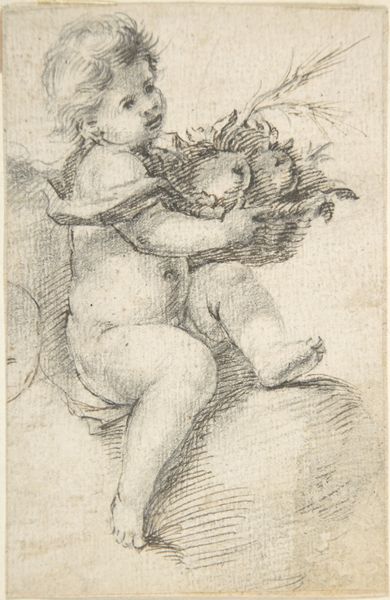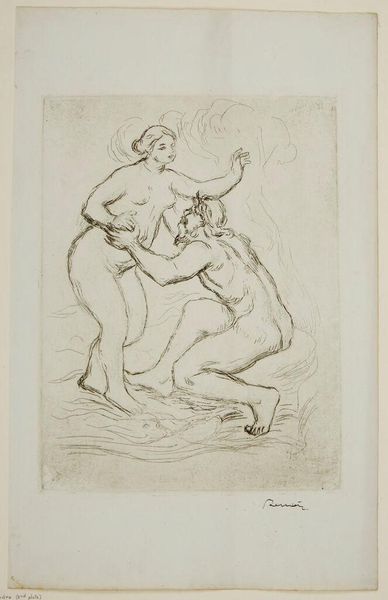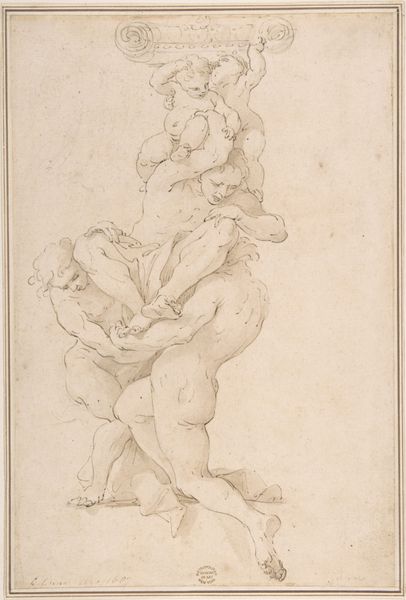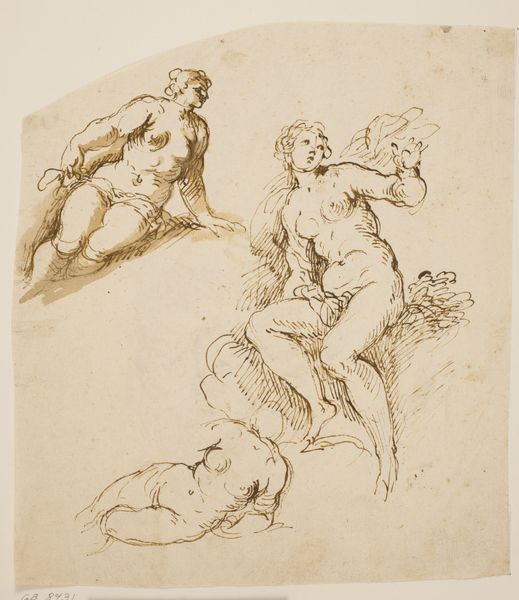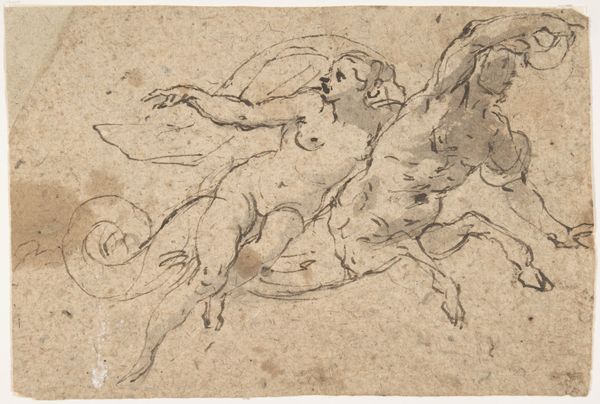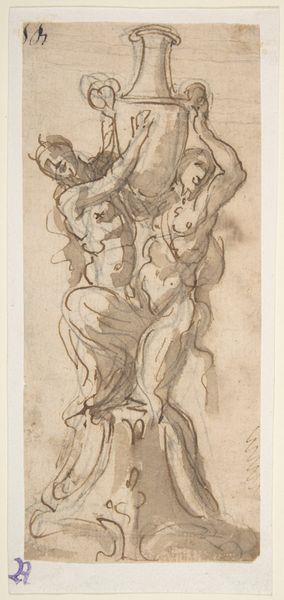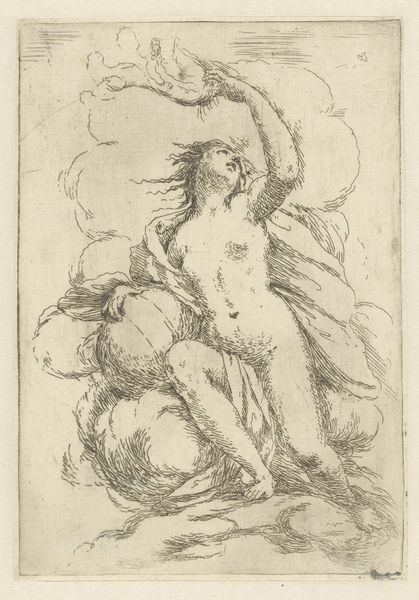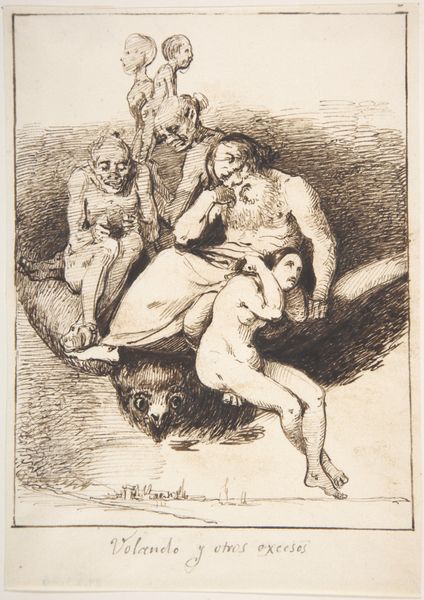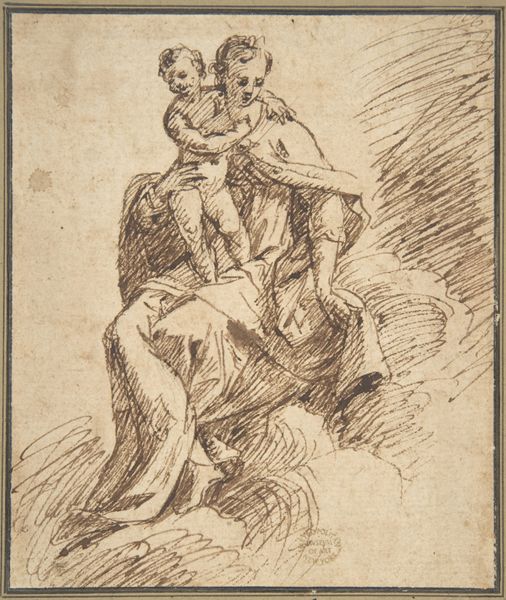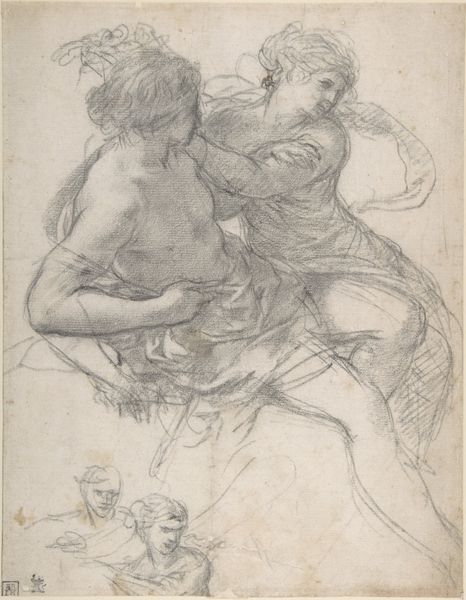
drawing, ink, pencil
#
drawing
#
toned paper
#
light pencil work
#
baroque
#
pencil sketch
#
figuration
#
personal sketchbook
#
ink
#
pencil drawing
#
ink drawing experimentation
#
pen-ink sketch
#
pencil
#
sketchbook drawing
#
portrait drawing
#
pencil work
#
genre-painting
#
nude
Dimensions: height 202 mm, width 160 mm
Copyright: Rijks Museum: Open Domain
Curator: Here we have "Twee stoeiende badnimfen", or "Two Wrestling Bathing Nymphs," a pen and ink drawing with pencil on toned paper, created by Gerard ter Borch sometime between 1614 and 1616. It resides here at the Rijksmuseum. Editor: There's a frenetic energy in this sketch; a kind of awkward, playful tussle between bodies, rendered with bold, almost brutal strokes. What’s striking is that even in this early, gestural state, ter Borch captures a sense of raw physicality. Curator: Absolutely. And if you look beyond that initial impression, you can appreciate the careful construction of classical imagery. Nymphs, symbols of feminine beauty and nature, have roots that stretch back to ancient Greek mythology. Ter Borch places them within a tradition of idealized—though often fraught—depictions of the female form. Editor: Fraught is the word. There’s something unsettling about the gazes and exaggerated forms. It's hard to ignore how the image echoes broader historical trends of objectification and the control of female bodies. The other figures behind them, sketched more faintly, appear like onlookers, or perhaps echoes, multiplying the sense of scrutiny. Curator: Well, art of the Baroque period certainly reflected and amplified contemporary attitudes. Though it's impossible to know definitively what Ter Borch intended, the image does explore both pleasure and tension. This type of imagery, with the embracing figure almost sitting in the other’s lap, might also be understood as an allusion to, for example, depictions of the Three Graces, which stands for charm, beauty, and creativity. Editor: While those allegorical associations are historically pertinent, aren't we also obligated to see how the work participates in the surveillance of women and bodies of water throughout art history? It invites a voyeuristic perspective that we must contend with, while reflecting the societal context in which it was created. Curator: Indeed, art gives a tangible entry to discussions regarding its surrounding society, even and especially within historical works. And these nudes, for their Baroque sensibility, carry complicated histories that we today have opportunities to shed new light upon. Editor: Exactly, which, I think, allows us to see beyond the aesthetics of line and form and recognize this piece as something active: not only an example of artistic ability, but also a mirror reflecting societal preoccupations of its time.
Comments
No comments
Be the first to comment and join the conversation on the ultimate creative platform.
